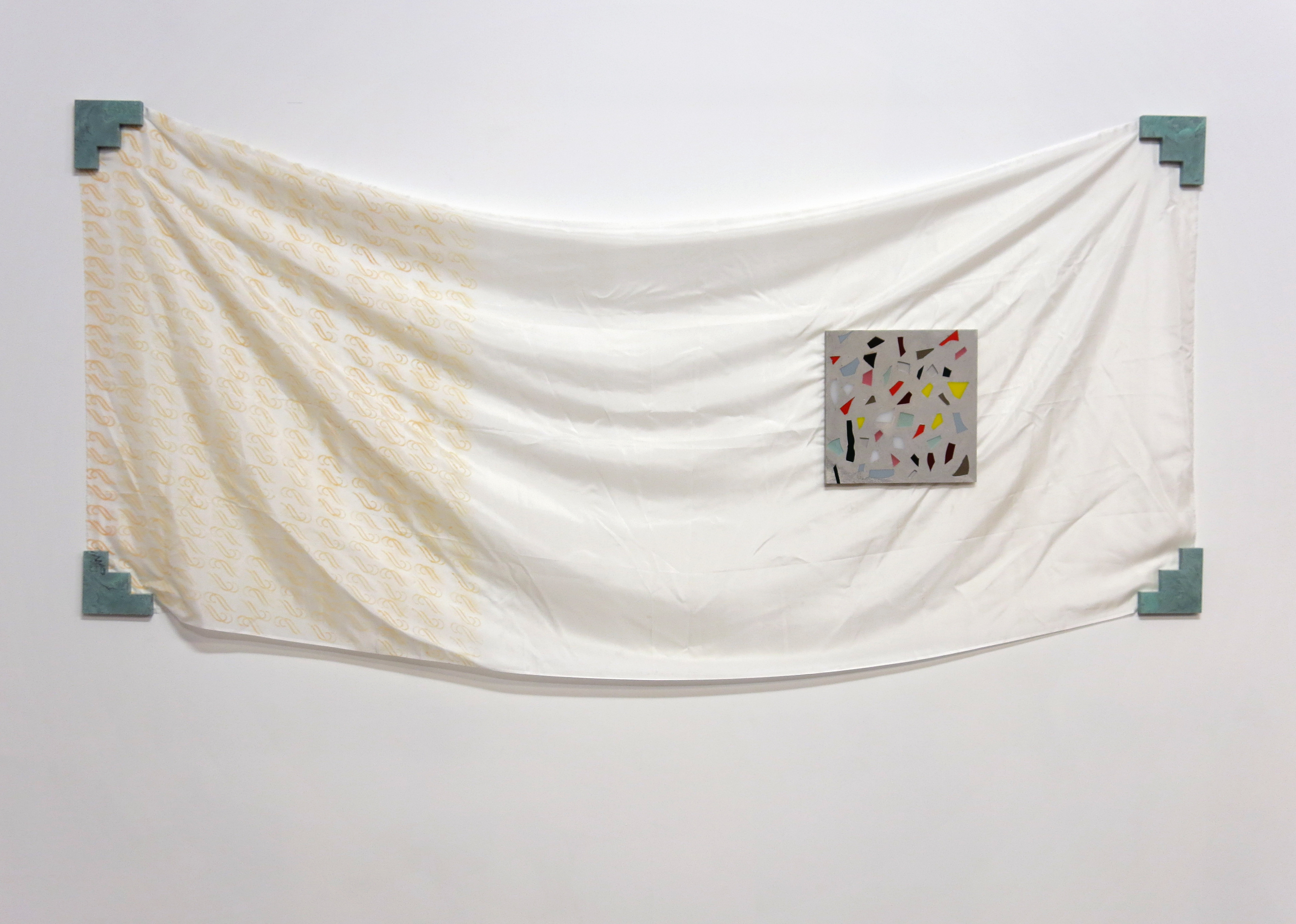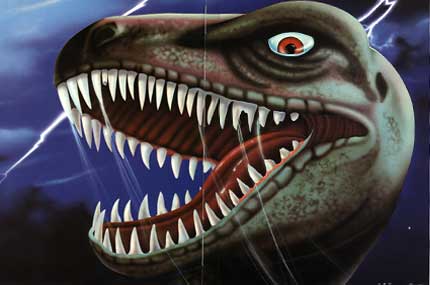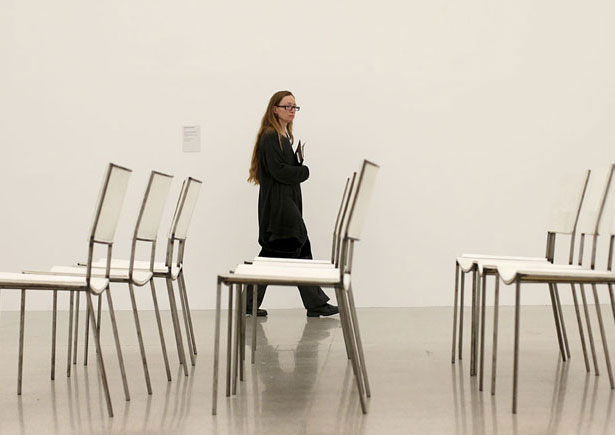Lauren Godfrey
Interview by David McLeavy
Published January 2014
-
Lauren Godfrey’s work spans performance, sculpture and collage. Following her appearance in Bloomberg New Contemporaries in 2012 she has exhibited in various locations in Britain along with showing work in France and Italy. Her work looks at the point where language and objects meet and aims to explore that moment.
-
So your practice spans across sculpture, performance and writing with a strong focus on language. I am interested to know how you view these various facets and whether you consider them separate from one another or part of the same critical process?
For me, they are absolutely the same strands. Although the works are executed with different methods, it is all traveling towards the same aim which is to understand the relationship between the spoken and written word, the tension between imagery and text and attempting to approach making work as the forming of a sentence in the mouth - on the tip of the tongue or formatting type, copying, pasting, quoting, underlining, using dashes and arrows to continue a line of thought. The idea of a written recipe and the resulting dish as a kind of script for a play or a musical score excites me, likewise seeing the objects involved as collaborating to make a whole sentence, menu or image. (This is something that Haim Steinbach writes brilliantly about.)
I feel like the medium that each work employs is faithful to the idea but is very difficult to transfer onto future works, it implies a falseness for me. For example, I made an inlaid linoleum floor and a 16mm film for the same exhibition, I couldn't set out again to make a floor work as that suited the impetus for that idea, it was the correct execution for those circumstances (and I have had a spare roll of 16mm film sitting in my fridge for almost 2 years now!) In a similar way a performance piece might be the culmination of a particular period of thought, a necessity to verbalise something with all the tensions and humour that performance suggests but I don't feel like making another performance straight after, only when those circumstances feel right again. As you can imagine this makes things a bit more difficult when deciding what to make next...there's no formula!
I do find that writing helps to inform all of it and to hone some of the varied thoughts, I understand that it's frustrating as a viewer not to be able to 'get' how the different facets relate immediately but I hope it grows to make sense. It's more fun for me this way!

'SPAG TAG' Crazy Golf hole, dimensions variable, jesmonite, marble dust, brass, polystyrene, wood, screen printed polyester, 2013
Do you find that by having a working practice that is not focused upon a specific style of output, but a rather project by project/idea by idea based practice, there are difficulties in forging a sustainable career as a young artist?
I think that it makes it easier to identify artists by certain tropes or icons in their work but I think this will happen no matter what you do. We'll always find ways of describing things in shorthand - the artist who does 'pasta' or 'legs' or 'shiny inflatable things' I think these things
happen beyond your control anyway. I once had a very troubling tutorial in which the visiting tutor told me I needed to work out my 'schtick' that it was all too sprawling and that galleries wouldn't like it if I didn't have a ‘thing’ to latch onto. This seems so sad and I think
untrue, as soon as you start trying to manufacture a theme I think all the gusto is lost. I think the versatility can develop to be a viable theme of sorts, if you prove you can do these many things, the interesting people will trust that you can do the next. Perhaps I'm being all too
idealistic, but that's how I see it. Some of my favourite artists have pretty unpredictable and varied outputs.

Shrimp Whisker Silk (with Confetti Terrazzo), 200cm x 100cm Cast Jesmonite with inlaid perspex, hand stamped silk. 2012
A lot of your work has a beautiful aesthetic impact due to your choice of colours, materials and surface finishes (I cite your work Mamma Mia Diptych, Part I 'Salsiccia e Finocchio', 2012, as an example). How important is it to you that your work appears attractive whilst also maintaining its literary beginnings?
These things are important, interesting you cite the literary beginnings because often the impetus for work comes from a descriptive or poetic sentence, or a recipe; something written or spoken. The piece ‘Shrimp Whisker Silk’ initially came about as an imagined manifestation of what shrimp whisker silk might look like as a pattern. In a book about the Memphis group there was an excerpt of text from a Chinese story in which it described a salon and the marble panels on the walls with ‘shrimp whisker silk’ drapes. I liked this notion of something being so fine it was like shrimp’s whiskers so I set about designing a pattern that could live up to that name. It all relies on the quality of the surface and the visual elements, these things speak a certain language of interior luxury that I am interested in through people like Ettore Sottsass and Gio Ponti. Ponti designed a hotel in Sorrento, Italy in which each of the 100 rooms has different patterned tiles on the floor. This attention to detail on such a grand scale really excites me.
I find it interesting how you are influenced by Memphis designers such as Sottsass. Artists have been influenced by designers for many years now, similarly designers have been influenced by artists. How do you personally deal with your relationship with design and do you ever employ methods within your work that you would consider as replicating the way a designer may operate?
I spend a lot of time drawing things on the computer in Adobe Illustrator which then get turned in to laser cut metal or perspex objects. I suppose this interaction with manufacturing companies as a means of production feels a bit like I imagine a designer works, though it is very abstract to declare what is a designers' territory and what is an artists'. I feel like the line is totally blurred. I'm sure Sottsass and his gang would've seen themselves as artists, they very much operated in an artistic sense, I'm thinking as well of their invitations to launches of new furniture - they were so experimental - they never showed pictures of the objects, sort of in the style of an art private view invite. I just found an amazing magazine called 'Terrazzo' in a second hand book shop in Whitstable, every issue has a section called 'travel notes' by Ettore Sottsass where he made a visual essay of photographs on a theme like 'walls' or 'architecture', it feels so much like an art publication today, I think there is very little difference.

Invitation to the first Memphis presentation in 1981, arc’74, Milan. Graphics by Luciano Paccagnella
Many artists, it seems yourself included, find inspiration from fairly obscure sources such as Memphis and magazines such as Terrazzo, which may not exist within the awareness of the general public or the layman, so to speak. How do you feel viewers who do not have a previous knowledge of these subjects approach the work and do you feel you have to inform an audience of these references?

I've been thinking a lot about the amount of reveal that goes on when an artist talks about their work and whether this adds or subtracts from the work as an individual entity. I feel I have a tendency to over reveal when speaking about my work but to compensate I think I load the work itself with a maze of references, this is not to be obscure or over intellectual, only that often this is how the work manifests itself as a distillation of all these conscious and subconscious references. I don't think it's an artists' responsibility necessarily to inform the audience, for me art should work on many levels, an immediate, physical/emotional/visual reaction or urge towards the work that requires little or no prior knowledge or references, followed by a realisation that these surface nerve reactions have underlying meaning or further to delve. It doesn't need to be as simple as ‘this inspired this and therefore here is the work’, I think the best works are harder to pin down. I hope there is something to ‘grasp’ from the work without needing to know the whole story. This is definitely something I play with in my work as well, sometimes I like to keep the understanding at arm’s length – this is clearest in the text works where I use other languages, the statements or sentences always shout so loudly in English or in clear terms and the use of Italian in particular acts as a veil over the sentiment of the words, it stops the work only being about that notion and introduces other formal elements. I think I really worked through this in the performance 'Eduardo, Eduard, Edouard, Ed' 2012 at ICA where I got 4 actors to perform statements taken from Ed Ruscha paintings, one after the other in Italian, German, French and finally English. This slow reveal and gradual understanding is something I really enjoy, the smatter of laughter as the single Italian in the room understands 'sabbia nella vaselina' following through to the clumsy recognition of words from school-learnt French and then the punch line delivered by the actor with an American accent at the end, 'Sand in the Vaseline'.

Mamma Mia Diptych Part 1 Salsiccia e Finocchio, 50cm x 50cm jesmonite, marble dust, perspex, brass, 2012
We have mentioned design quite often during our conversation; I am interested to know if you have ever thought of making furniture?
Yes. Though I think its difficult to compete with the ones who really do make furniture and useful things. I work in a posh cutlery shop and I have become so obsessed with admiring the nuances of the perfect knife and fork, style, ergonomics etc. It’s a whole spectrum of things that I think are better left to the experts. I think it’s more problematic to make art-furniture that doesn’t enter into the use-world in the same way. I’ve been making Jesmonite paving slabs and I’ve recently made them tessellate on all sides so they can be arranged in a strip or a square. I’d like to make a coffee table or dining table out of them but I think I’d want it to enter the real dialogue of furniture or function otherwise it’s just some sculptures on legs at a comfortable viewing height, like a glorified plinth. One ‘art-furniture’ work I really liked was at Inverleith House in the ‘Mostly West’ show, Franz West had collaborated with Heimo Zobernig on a series of sculptures, the form they took was a series of bent metal chair-shaped objects with bent plywood seats and backs painted white, all facing one way to the wall on which there was a sort of white protrusion. I watched people walking through completely ignoring the ‘chairs’ and looking at the sculpture-like, wall based object. I thought it was really interesting that because the chair sculptures looked like chairs, no one looked twice at them, even though they were hand made and carefully considered. (I don’t think you could sit on them) I think this is the worst and best thing about art-furniture, it either goes unnoticed or gets strangely revered...
Perhaps I feel more comfortable stealing from the aesthetics of design but keeping my distance from the functionality or necessity of mass production.

Franz West and Heimo Zobernig, Inverleith House, Edinburgh, 2013
What have you got planned next?
Next is launching Issue 3 of the publication I make in collaboration with Connie Butler, called Her Eyes and My Voice. Each issue explores the relationship between the visual and verbal in art through a different title, so far we've had 'A Relationship in Ekphrasis' and 'Performing to Objects' the next one is 'Decorative Grammar'. We publish once a year and it's really nice to have the time to get it right, inviting other artists, writers, poets etc to be involved and respond to the title. Also it's a great way of contextualising our own practices, we always selfishly choose titles that really fit with what we are each thinking about at that time so we have the opportunity to delve deeper into the topic and antagonise it with the help of other people. That will be launched in March hopefully. Otherwise, working on new things in the studio, I like having batches of time to spend on new work without the pressure of something to make it for. The best work always comes out of these times. I’m also working on a project for Create London to design a billboard for the Olympic site, advertising a business in East London, and I’m curating an exhibition for Turf Projects in Croydon in May!
-
Lauren Godfrey lives and works in London. Recent exhibitions include Apartment 4, Clermont Ferrand, France, Cocktail #1, Co2 Gallery, Rome and Lounger, Mathews Yard, Croydon.
-
If you like this why not read our interview with Harry Meadley
-
© 2013 - 2018 YAC | Young Artists in Conversation ALL RIGHTS RESERVED